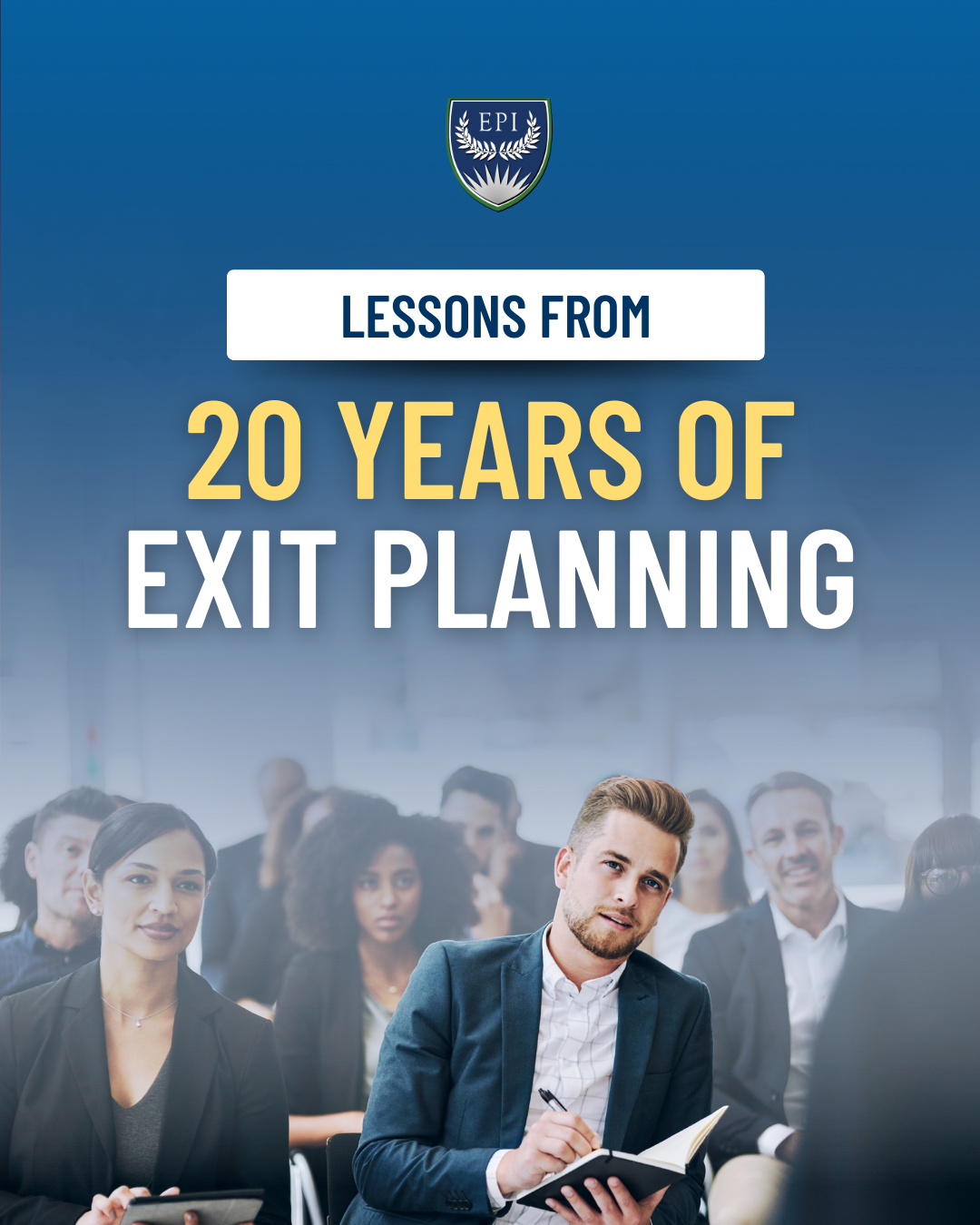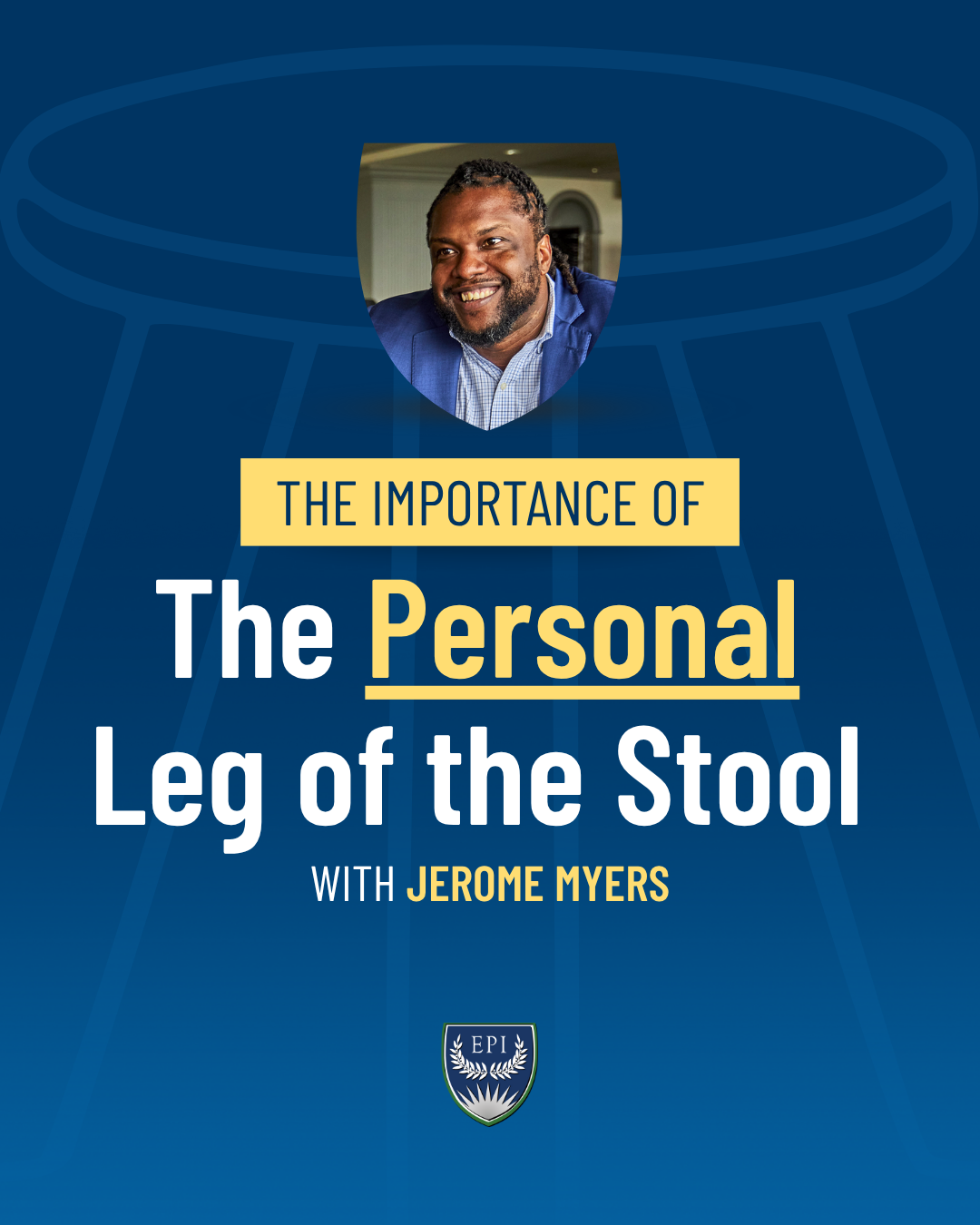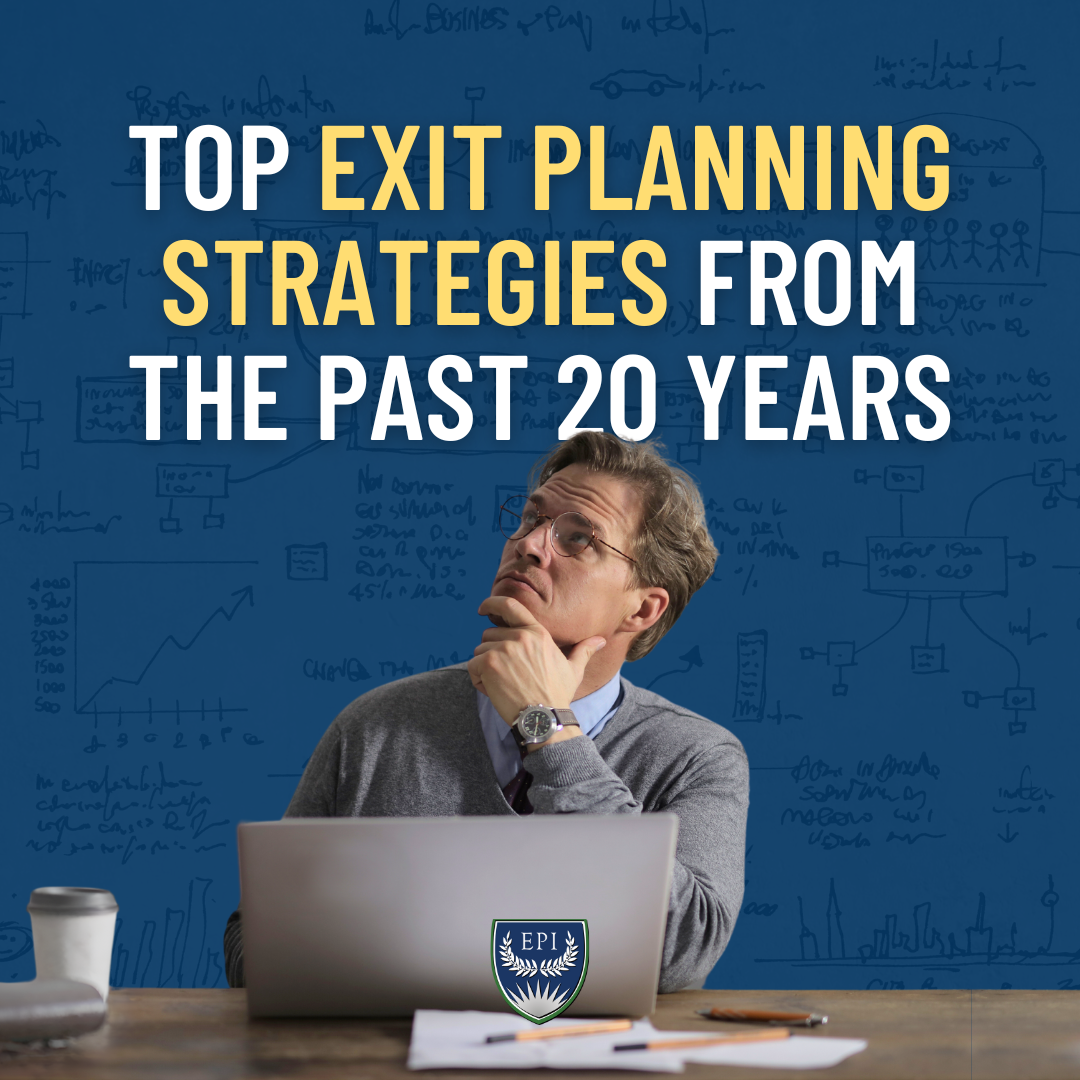
THE EXIT PLANNING BLOG
Keep up-to-date with exit planning, succession planning, industry trends, unique specialty insights, and useful content for professional advisors and business owners.
Share this
Lessons from 20 Years of Exit Planning
by Kellie Nock on April 10, 2025

A Brief History of Exit Planning
Exit planning is not a new concept. Business owners understand that, at some point in their lives, they will need to consider the prospect of exiting the business. This has been the case for business owners since the beginning of the profession, but only 20 years ago did someone realize the need for a process to not only walk business owners through exits but also to ensure that the exit was what they wanted.
Exit Planning Institute® (EPI) co-founder Peter Christman realized that his clients were exiting their business, but they were not satisfied with their exits. The opportunity to address this ever-growing group of business owners had never been more relevant, and Peter, along with author of The $10 Trillion Opportunity Rich Jackim, co-founded EPI. EPI has carried that mission throughout its existence, marking two decades of the exit planning profession. This was bolstered in 2013 with the creation of the Value Acceleration Methodology™.
The Value Acceleration Methodology is the framework that guides the exit planning journey, containing three gates—Discover, Prepare, and Decide—that the Certified Exit Planning Advisor (CEPA®) and the business owner go through together. Each gate contains the necessary steps the team needs to take to grow and accelerate value, positioning them for the exit should that time come at the Decide Gate.
The Value Acceleration Methodology has been evolving and enabling CEPAs and owners to achieve desired outcomes, hone their exit planning skills, and achieve the destiny they desire.
Lessons Learned
So, with two decades of history behind it, what lessons have we learned from exit planning?
Exit Planning is Continuous
Exit planning is continuous. When you hear the word “exit,” the first thing that comes to mind is the end. While exit planning encourages the owner to think with the end in mind, it is not the sole focus of the Methodology. Exit planning is an ongoing process that empowers owners, with the guidance of their CEPAs and advisors, to grow and accelerate value for the business through proven steps. This puts them in a much stronger position at the Decide Gate when they choose the future of the business.
Exit Planning is Collaborative
A business owner can consult their advisory group, lawyer, spouse, and any other relevant parties. Exit planning does not need to involve solely the CEPA and the owner—in fact, it urges collaboration to ensure the best outcomes across the board.
Exit Planning is Personal
A key factor for the Value Acceleration Methodology is the Three Legs of the Stool™ approach, which calls on the team to align the business, financial, and personal legs of the stool for a holistic approach to exit planning. Owners are often intrinsically connected to the business, making the relationship between owner and company deeply personal. Those with the CEPA designation understand this and advise with empathy and respect.
Exit Planning Can Be Taught
With more than 8,000 CEPAs in the nation today, every advisor brings a different perspective to the profession. CEPAs can be the business owner’s “quarterback,” the hands-on advisor guiding through the Value Acceleration Methodology. CEPAs can also be educators, informing fellow advisors on the Methodology and exit planning. There are various archetypes that CEPAs may follow, and with an ever-expanding base of business owners in the market today, it is essential to fill the needs of owners.
The Next Two Decades
Consider business owners in the 1980s. What was important to them? What was the economic outlook at the time? Now, consider owners in the 2020s. It’s a very different picture, with new financial, sociological, and technological considerations at play. With a rapidly changing world, it can feel daunting to consider what the economy will look like in 10, 15, or even 20 years. This is why it is crucial for exit planning to continue evolving by taking real-world experience and insight from CEPAs, business owners, and other thought leaders.
Over the past two decades, the exit planning profession has evolved to meet the needs of business owners worldwide. What started as a concept has grown into a structured approach through the Value Acceleration Methodology. Exit planning now provides a framework and fosters discussions that help build not just successful businesses, but also significant ones, putting a business owners’ destiny into their own hands.
Related Resources:
Share this
- Blog (545)
- CEPA (422)
- exit planning (249)
- CEPA community (187)
- Business Owner (172)
- Exit Planning Summit (96)
- EPI Chapter Network (89)
- Value Acceleration Methodology (80)
- Exit Planning Partner Network (76)
- EPI Announcement (49)
- Content (48)
- Webinars (37)
- Excellence in Exit Planning Awards (33)
- Marketing (30)
- 2024 Exit Planning Summit (28)
- 5 Stages of Value Maturity (26)
- Books (24)
- EPI Academy (24)
- EPI Team (22)
- Exit Planning Teams (22)
- Leadership (21)
- 2023 Exit Planning Summit (20)
- family business (20)
- women in business (19)
- Intangible Capital (18)
- Exit Options (17)
- Black Friday (16)
- CPA (15)
- Walking to Destiny (15)
- State of Owner Readiness (14)
- Chapters (13)
- Chris Snider (12)
- National Accounts (12)
- Small business (12)
- charitable intent (12)
- personal planning (12)
- Financial Advisors (11)
- Season of Deals (9)
- 5 Ds (8)
- About us (8)
- Podcast (8)
- Insiders Bash (7)
- Scott Snider (7)
- Christmas (6)
- Exit Planning Content Library (6)
- Case Studies (5)
- Owner Roundtables (5)
- Three Legs of the Stool (5)
- Value Advisors (5)
- financial planning (5)
- Awards (4)
- Circle of Excellence (4)
- Exit & Succession (4)
- Five Ds (4)
- executive training (4)
- EPI Thought Leadership Council (3)
- Owners Forum (3)
- author (3)
- forbes (3)
- DriveValue (2)
- Exit Is Now Podcast (2)
- Peter Christman (2)
- Veteran (2)
- Whitepapers (2)
- Business Owners Forum (1)
- SOOR (1)
- business consultants (1)






